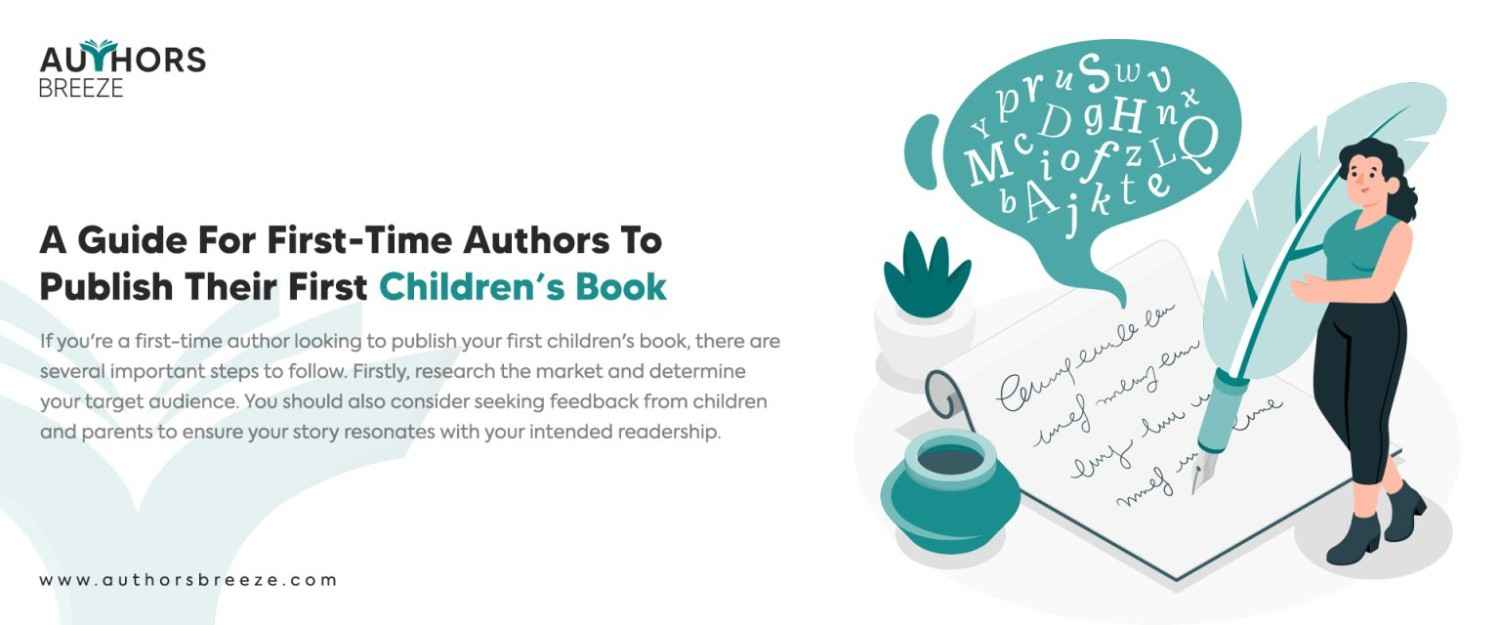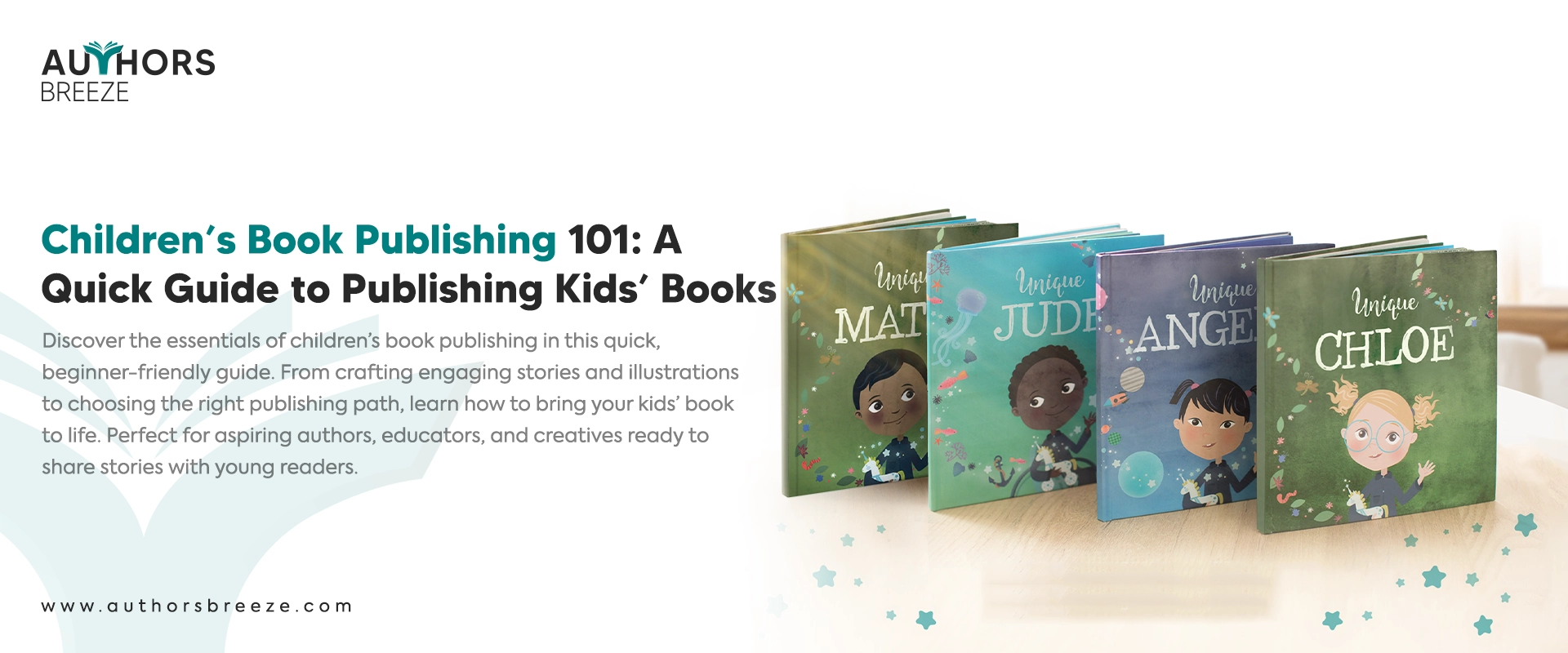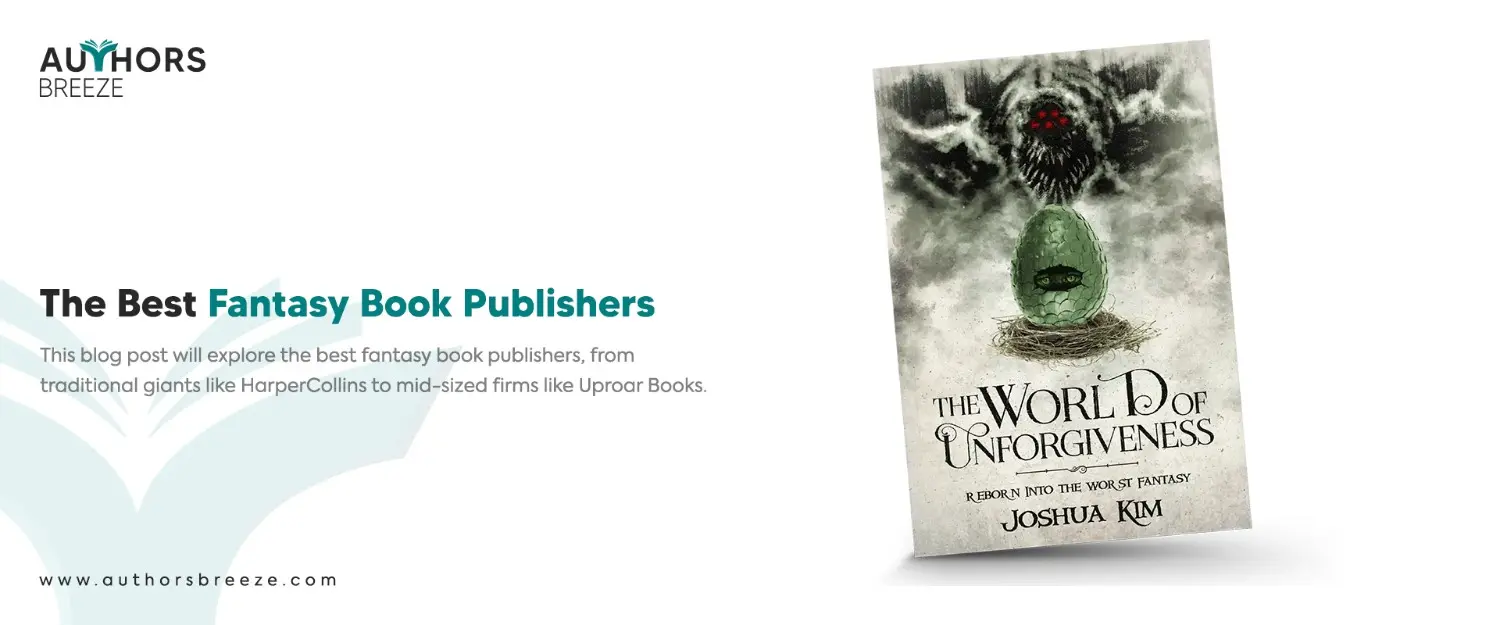Don’t Have Time to Read? Listen to this Article Instead!
Publishing a children’s book can be an exciting experience for the author. It allows you to share your unique story and perspective with the world. But why is publishing a children’s book so important? For starters, children’s books play a vital role in shaping a child’s imagination, creativity, and overall cognitive development. They provide a source of entertainment, education, and inspiration that can help children develop critical thinking, problem-solving, and language skills.
Unlock the Door to Success: A Must-Read Guide for First-Time Children’s Book Authors on How to Get Published
As a first-time author, the thought of publishing your very own children’s book can be nerve-wracking. You may have a fantastic story in mind. Still, the process of turning it into a tangible book can seem overwhelming. With the proper guidance, you can turn your dream of writing a book into reality and publish a book that children will love and cherish for years to come.
Plan Your Book
The publishing process of your book starts with the first step, which is planning. Take the time to research and plan your book carefully. As a result, you will be on your way to creating a book that resonates with young readers and makes a positive impact on their lives.
Planning a book involves several vital elements that will ultimately determine the success of your book. Let’s take a look at them:
Find Your Niche
Finding your niche is the first step in planning your book. It is pretty essential to determine what type of children’s book you want to write, whether a picture book, a chapter book, or a young adult novel. Once you have decided on the type of book you want to write, it is essential to identify your niche. What makes your book unique and different from other books in the same category? What themes and topics do you want to explore in your book?
Understand the Target Audience
One thing that is also crucial is to understand your target audience. To identify your audience, look for the answers to the following:
- Who are you writing for?
- What age group is your book intended for?
- What are their interests and preferences?
By understanding your audience, you can create a story that resonates with them and keeps them engaged from start to finish.
Develop a Storyline
A good storyline is the foundation of a successful children’s book. Therefore, it should be engaging, exciting, and capture the imagination of your readers. To develop your storyline, consider the theme of your book, the characters, and the plot. What challenges will your characters face? Moreover, what lessons will they learn? Also, what message do you want to convey to your readers?
Outlining your book
A well-structured outline can help you stay on track and ensure that your book flows smoothly from beginning to end. Your outline should include the major plot points, character development, and any essential themes or messages you want to convey. It should also include the structure of your book, such as the number of chapters, the length of each chapter, and any illustrations or graphics you want to have.
How to Write a Children’s Book?
Writing a children’s book requires a unique approach that differs from writing for adults. In this section, tips on how to write a children’s book. With these tips, you will be on your way to creating a children’s book successfully.
Writing Tips for First-Time Authors
Writing for young readers requires a different writing style and approach than writing for adults. Short, simple sentences, engaging language, and colorful illustrations are all key elements to consider when writing for young readers. It is essential to keep your writing style exciting and straightforward, with an appropriate vocabulary level for your target audience. In addition, you should pay close attention to pacing, structure, and character development to create a story that flows smoothly and keeps your readers engaged from start to finish.
- Understand the age group you are writing for and tailor your writing style and vocabulary accordingly.
- Children relate better to characters they can identify with, so create relatable and likable characters.
- Use simple and easy-to-understand language, and avoid complex sentence structures.
- Make sure your story has a clear beginning, mid, and end. Moreover, avoid subplots that may be too complex for children to follow.
- Use humor, suspense, and fun to keep children engaged and interested in the story.
- Teach a moral lesson or teach values such as kindness, honesty, and friendship with your story.
Editing and Revision
The importance of editing and revising your manuscript cannot be overstated. Editing and revising your manuscript is crucial to ensure your book is polished and error-free. After completing the initial draft, take a break from your manuscript and return to it with fresh eyes. You should read through your manuscript multiple times and make revisions as needed. Focus on clarity, consistency, and pacing, and don’t be afraid to make significant changes to improve your manuscript.
Hiring an editor
An editor can play a vital role if you are writing a book for children. They can help you identify weaknesses in your manuscript and provide valuable feedback on pacing, structure, and character development. They can also help you ensure that your manuscript is free of errors and grammatical mistakes. Choosing an editor who specializes in children’s books and has experience working with first-time authors is crucial.
Illustrate Your Book
Illustrations help bring your story to life, capture the imagination of your readers, and make your book more engaging and visually appealing. The images should complement the text and convey the story in a way that words alone cannot. Young readers often rely on illustrations to help them understand the story and connect with the characters. Therefore, create illustrations that bring your story to life and captivate and inspire young readers.
Choose an Illustrator
Your illustrator should have a style that matches the tone and mood of your book. Look for illustrators specializing in children’s books who have experience working with first-time authors. Consider the illustrator’s portfolio and previous work to ensure their style aligns with your vision for your book. In addition, consider the cost and timeline for the illustrations.
Communicate with Your Illustrator
Clear and effective communication with the illustrator is essential to ensure that the illustrations match your vision for your book. Be sure to provide your illustrator with detailed descriptions of the characters, settings, and any specific details you want to be included in the illustrations. In addition, provide your illustrator with the manuscript so they understand the story and characters completely.
Work Collaboratively
Once you have found an illustrator whose style and aesthetic aligns with your vision for your book, it is vital to establish clear expectations and guidelines for the collaboration. Setting clear project deadlines and milestones is essential to ensure you and your illustrator stay on track.
Format and Design Your Book
Format and design your children’s book. It is a critical step in creating a visually appealing book that is easy to read. They are crucial elements that will determine the success of your book.
Choosing the Right Format For Your Book
Choosing the proper book format is essential to ensure your book looks professional and is easy to read. The two most common formats for children’s books are paperback and hardcover. Paperback books are typically more affordable and easier to produce. In contrast, hardcover books are more durable and have a more significant impact on the reader. Choose a format that aligns with your budget and the goals for your book.
Importance of Book Design and Layout
A well-designed book with an appealing layout will more likely capture the reader’s attention and keep them engaged throughout the story. Choose a design that is consistent with the tone and mood of your book. Consider the size of the book, the spacing between the text and illustrations, and the placement of page numbers and other design elements. Book cover page design is also crucial to attract the audience’s attention.
Choosing Fonts, Colors, and Images
Choosing fonts, colors, and images is another critical element in formatting and designing your children’s book. Fonts should be easy to read and consistent throughout the book. Use colors consistent with the book’s tone and mood, making the illustrations and text stand out. Choose images that complement the text and convey the story effectively. Ensure that the photos are high quality and appropriate for the target audience.
Publish the Book
The final step in bringing your story to life and sharing it with the world is to publish your book. It is a long process that requires careful planning, hard work, and persistence. The key to success is to focus on your goals and never give up. With determination, creativity, and a willingness to learn, you can create a children’s book that inspires, educates, and entertains young readers for years to come.
What are the Best Ways to Publish a Book?
Publishing a book can be really tough, especially for first-time authors. Knowing where to start cannot be easy with so many options available. Here are some ways to publish a book that you should consider:
Traditional Publishing
Traditional publishing is the most popular way to publish a book. It involves submitting your manuscript to a publishing house, which will edit, design, and market your book. Traditional publishers will pay you an advance and royalties on sales. In addition, it offers the benefit of having an experienced team of professionals handling every aspect of the book’s production. However, it is not easy to get accepted by a publishing house. Moreover, the process can take a long time.
Self-Publishing
Self-publishing has become increasingly popular in recent years. In self-publishing, you will publish your book as a professional ebook or a physical book. It involves handling all aspects of the book’s production, from editing and design to printing and distribution.
Self-publishing gives you complete control over the publishing process. However, you must invest your time and money into the process. In addition, it also requires more work on the author’s part to ensure that the book is produced to a professional standard. Moreover, getting your book noticed among the thousands of self-published books on the market can be challenging.
Hybrid Publishing
Hybrid publishing is a combination of traditional and self-publishing. With hybrid publishing, you work with a publisher who will provide some of the conventional publishing services, such as editing and design. However, you will also need to contribute financially to the process. Hybrid publishing can be a good option if you want more control over the publishing process but still want some support from a publisher.
Find a Literary Agent
Finding a literary agent can be an effective way to increase your chances of getting your book traditionally published. Literary agents have connections in the publishing industry. They can help authors navigate the submission process, negotiate contracts, and secure favorable deals.
Steps To Find a Literary Agent
Here are some steps you can take to find a literary agent for your children’s book:
- Look for literary agents who represent children’s books in your genre or age range. You can use online resources to find agents and their submission guidelines.
- Address the literary agents by their name, and personalize your query letter to demonstrate that you’ve done your research and understand their work and the industry well.
- Follow the submission guidelines provided by the literary agents on their website or in their submission requirements. It can include the format of the query letter, sample chapters, and a synopsis.
- Ensure your manuscript is polished and ready to be seen by a literary agent. Consider hiring a professional book editor or getting feedback from beta readers before submitting your work.
- Keep track of the agents you’ve queried, the dates of your submissions, and any feedback you receive. It can help you track your progress and keep organized.
- Be prepared for a long process. Literary agents receive a high volume of submissions, which can take several months to receive a response. Don’t get discouraged if you receive rejections, keep persisting and improving your work.
- Attend writing conferences and events to meet literary agents in person and learn more about the industry. It can be an excellent opportunity to network and make connections.
- Consider asking for a referral if you have writer friends or acquaintances who have worked with literary agents. A personal recommendation can help your submission stand out.
Want to learn more about finding a literary agent for your book? Check out our blog: How to get a literary agent for your book? Detailed Guide 2025
Submitting your manuscript
Submitting your manuscript to publishers or literary agents requires careful research and preparation. Before submitting your manuscript, ensure that it is thoroughly edited and polished. Research publishers or literary agents that specialize in children’s books and have a track record of success in your genre. Follow submission guidelines carefully and be prepared for a long and sometimes frustrating process.
Marketing and promoting your book
Book advertising and promoting your book is a crucial step in getting it into the hands of readers. With persistence, creativity, and a willingness to learn, you can market and promote your book like a pro and achieve the success that your story deserves. Let’s explore some practical strategies to build buzz around your book.
Build Online Presence
Building an online presence is quite vital in today’s digital age. Here are some tips for creating a strong online presence and promoting your book.
- Create a professional and well-designed author website. It can be the foundation of your online presence. It should be visually appealing, easy to navigate, and mobile-friendly.
- You can also use social media platforms relevant to your audience, such as Facebook, Twitter, Instagram, and LinkedIn Instagram to share your story, engage with fans, and promote your book. Regularly post engaging content and interact with your followers.
- Blogging can help you establish yourself as an expert. So, create a blog where you can showcase your book, share updates, and connect with readers. Share your blog posts on social media to reach a wider audience.
- Collect email addresses from visitors to your website and send them regular newsletters or promotional emails about your book.
- Partner with other influencers in your industry to cross-promote each other’s books and expand your reach.
Create a Book Launch Plan
Creating a book launch plan is an effective way to generate buzz and excitement around your book. Your launch plan should include strategies for reaching out to influencers, bloggers, and media outlets, as well as scheduling book signings, readings, and other promotional events. You can also offer giveaways, discounts, and other incentives to encourage readers to buy your book.
Host Book Signings and Events
Hosting book signings and events is a great way to connect with readers, build your brand, and promote your book. You can partner with local bookstores, libraries, and schools to schedule events and reach a wider audience. You can also host online events, like webinars and virtual book clubs, to connect with readers across the globe.
Get Reviews
Reviews play a critical role in the success of your book. Positive reviews on Amazon, Goodreads, and other book review sites can help boost your book’s visibility and credibility. You can reach out to book bloggers and influencers in your genre and offer them a free copy of your book in exchange for an honest review.
FAQs
How Long Does It Take To Publish A Book for Children?
The timeline for publishing a children's book can vary widely depending on the publishing route you choose, as well as other factors such as the complexity of your manuscript and illustrations. Traditional publishing can take several months to several years, while self-publishing timelines can range from a few weeks to several months.
Do I Need An Agent To Publish My Children's Book?
While having a literary agent can certainly help you navigate the traditional publishing process, it's not always necessary. Many e-book publishers accept unsolicited submissions from authors without agents. Self-publishing allows you to bypass the agent and publisher altogether.
How Do I Get My Children's Book Into Bookstores?
Getting your book into bookstores can be a challenge, especially if you're a first-time author. One option is to work with a distributor who can help get your book into bookstores and other retail channels. Another option is to host book signings and events at local bookstores to generate interest in your book.
How Do I Get Reviews For My Book?
One option is to reach out to book bloggers and reviewers in your niche to request reviews. You can also offer review copies to friends and family members in exchange for honest reviews on different sites. Keep in mind that it's essential to comply with each site's review policies and guidelines to ensure your thoughts are authentic and unbiased.
Conclusion
As a first-time author, feeling overwhelmed and uncertain about the publishing process is natural. But don’t be discouraged! With dedication, hard work, and a willingness to learn, you can successfully publish your children’s book and share your story with the world.
It’s crucial to stay organized, stay focused on your goals, and continue to learn from other authors and industry experts to set yourself up for publishing success. Join writing groups, attend conferences and workshops, and read books and articles about the publishing process to expand your knowledge and expertise.
Above all, remember that publishing a children’s book is a labor of love. Stay true to your vision, be persistent, and enjoy the journey. Good luck on your publishing journey, and may your book inspire and delight children for years to come.






